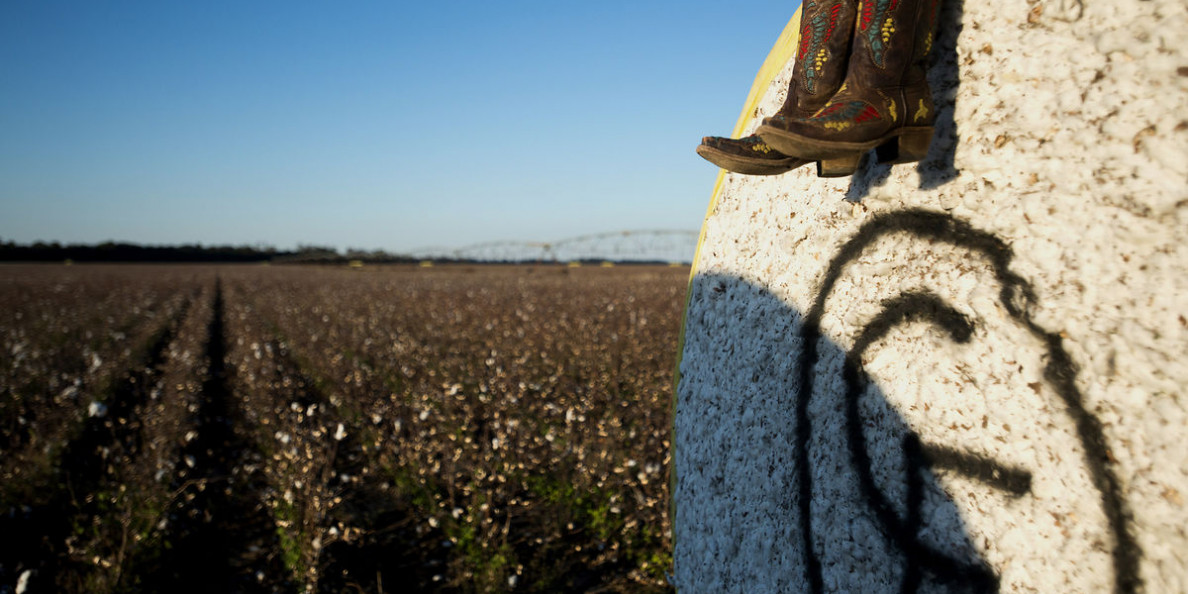June 23, 2023
- Outside Markets Were Mixed Throughout the Week
- U.S. Export Sales and Shipments Weaker than Expected for Week Ending June 15
- As of June 18, 89% of U.S. Crop has been Planted
Weather woes and talks of softening demand kept the cotton market in a tight trading range throughout the week. Markets were closed on Monday, marking a shortened week for traders. July First Notice Day is Monday, meaning many traders were busy wrapping up old crop positions. In addition to weather, hawkish data from outside markets added pressure to cotton futures. For the week ending June 22, the July contract closed at 79.29 cents per pound, down 135 points. December futures settled at 80.15 cents per pound, up 55 points for the week. Open interest rose 2,345 contracts, bringing the total to 172,053.
Outside Markets
Global economic news, geopolitical news, and the Fed kept outside markets mixed for the week. Markets wavered on news that many global central banks raised interest rates this week, including the European Central Bank and Bank of England. Although interest rates in the U.S. were paused in the June meeting, the Fed has said that data will continue to drive decisions where rates are concerned and 2% is still the target for inflation. The Indian prime minister visited Washington D.C. late this week for a state visit, with both countries hoping to bolster relations. On the commodity side, soybean prices were under pressure this week when the EPA announced a lower-than-expected biofuel mandate. After posting a one-month low last week, the Dollar finished with modest gains, adding pressure to commodities.
Export Sales
U.S. export sales were weaker than expected for the week ending June 15. A net total of 42,700 Upland bales were sold for the 2022/23 crop year. The biggest buyer for the week was Bangladesh, booking a total of 35,400 bales, followed by China with 33,600 bales, Taiwan with 6,900 bales, Egypt with 2,200 bales, and Malaysia with 1,900 bales. Cancelations were notable in this report, with a total of 48,100 bales canceled. Shipments were behind the pace needed to meet the USDA export estimate. A total of 236,800 bales were exported for the week. The one bright spot in this export report was new crop sales. For the 2023/24 crop year, 187,600 bales were booked, which is the highest amount reported in months. Sales and shipments of Pima increased when compared to last week. A net total of 2,000 Pima bales were sold and 4,100 bales were exported for the week.
Weather and Crop Progress
Monday’s Crop Progress and Condition Report showed that 89% of the crop in the U.S. had been planted as of June 18, which is slightly behind the 5-year average of 94%. Although crop conditions deteriorated slightly from the week prior, it is still in better shape when compared to last year. For the country, 6% of the crop is rated as “Excellent”, 41% as “Good”, 33% as “Fair”, 13% as “Poor”, and 2% as “Very Poor”. Hot, dry weather has been present in the Southwest throughout the past week. The warmer weather is forecast to continue into the next week as well. The crop in West Texas has started to develop, although the rains in May and June delayed planting and growth in the area. The high temperatures have started to impact the crop, and more rain will be needed in the coming weeks to provide relief from the heat. Severe storms have also plagued parts of the Southwest. The hail and strong winds that came along with these storms will likely increase abandonment in the areas. The South Texas crop continues to mature under hot, humid conditions. The high heat has helped the crop, but, like West Texas, rain will be needed soon to reduce stress. Next Friday, USDA will release the first acreage update. The Prospective Plantings report had an expected 6.2 million acres to be planted in Texas, 530,000 acres in Oklahoma, and 111,000 in Kansas. It is widely believed that the Southwest will plant less acres than initially thought, and next Friday’s report will provide an essential update as to what is expected for the 2023/24 crop.
The Week Ahead
With July futures entering First Notice Day on Monday, December futures will take center stage. The big news in the cotton market in the coming week will be the release of USDA’s June Acreage Report on Friday at 11 a.m. This will be the first acreage update from USDA since the Prospective Plantings report was released at the end of March, meaning, this will also impact the production expectations reported in the July WASDE. Aside from the Acreage Report, the Crop Progress and Condition Report, Export Sales Report, and weather forecast in the Southwest will continue to be a point of focus.
- Friday at 2:30 p.m. Central – Commitments of Traders
- Monday at 3:00 p.m. Central – Crop Progress and Condition Report
- Thursday at 7:30 a.m. Central – Export Sales Report
- Thursday at 2:30 p.m. Central – Cotton On-Call
- Friday (June 30) at 11:00 a.m. Central – Acreage Report


